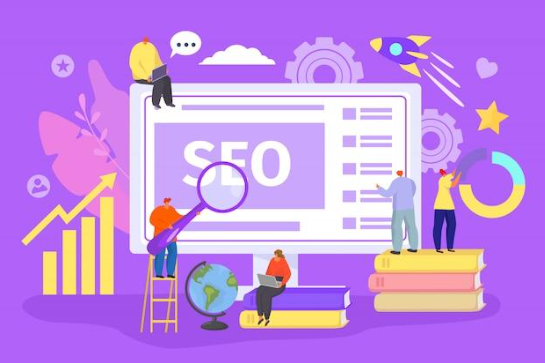The Power of Internal Linking for SEO: Boosting Your Website's Visibility and Ranking

Within the dynamic field of search engine optimization (SEO), staying ahead of the competition is crucial. While many SEO strategies focus on external factors like backlinks and social media signals, internal linking remains a powerful yet often overlooked aspect of optimizing your website for search engines. In this blog, we'll explore the benefits of internal linking for SEO and how you can leverage it to enhance your website's visibility and ranking.
Understanding Internal Linking
Before delving into the SEO benefits, let's first understand internal linking. When you connect one page of your website to another page on the same domain, you are engaging in the practice of internal linking. These links allow users to easily navigate your website and discover related content. Internal links are different from external links, which point to pages on other websites.
1. Improved Website Navigation
Website navigation is made easier as a result of internal linking. Users anticipate a flawless and user-friendly experience when they visit your website. Internal links help achieve this by guiding visitors to other relevant pages within your site. The bounce rate is decreased, which is a good indicator for search engines since it keeps consumers interested and encourages them to spend more time exploring your material.
2. Enhanced User Experience
User experience is a crucial factor for SEO. Search engines like Google give pages that provide valuable and user-friendly experiences. By employing internal linking, you're helping visitors find what they're looking for and delivering additional value by pointing them to more relevant and informative content. A positive user experience signals search engines that your website is valuable, leading to potential ranking improvements.
3. Spread Link Equity
Link juice, also name for link equity, is the authority and value that a webpage passes on to the pages it links to. Internal links allow you to distribute this link equity across various pages on your site. By linking to important pages from other high-authority pages, you can reinforce their importance in the eyes of search engines. This can help boost the ranking potential of those linked pages and even aid in getting new or less-established pages indexed faster.
4. Keyword and Content Relevance
Strategic internal linking helps search engines understand the structure and hierarchy of your website. When you link relevant anchor text to specific pages, it provides contextual signals to search engines about the linked page's content. Consequently, this can boost the page's ranking for the linked keywords. However, it's essential to ensure that the anchor text used in internal links is natural and not overly stuffed with keywords, as search engines can see this as manipulative.
5. Crawlability and Indexation
Search engines use bots, also known as crawlers, to navigate and index web pages. Internal links from these bots' pathways to discover and index new content. A well-structured internal linking system ensures that all your important pages are easily accessible to search engine crawlers. This, in turn, improves the likelihood of your content being indexed, which is the first step towards ranking on search engine results pages (SERPs).
Best Practices for Internal Linking
Knowing the significance of internal communication linking for SEO, here are some best practices to get the most out of your internal linking strategy:
Create Relevant Anchor Text: Use descriptive and relevant anchor text for your internal links. Avoid generic terms like "click here" and instead use specific keywords that reflect the linked page's content.
Prioritize User Experience: Ensure that your internal links add value to the user's journey. Don't overdo it with excessive links on a page; focus on guiding users to the most relevant and helpful content.
Link to High-Quality Content: Linking to high-quality and authoritative content within your site reinforces your website's overall value and authority.
Maintain a Hierarchical Structure: Organize your content in a logical hierarchy, and use internal links to connect related pages in a structured manner.
Avoid Broken Links: Regularly check your internal links to ensure they are not broken or lead to non-existent pages. Broken links can negatively impact a user's experience and hinder search engine crawling.
Use Sitemaps: Create an XML sitemap and submit it to search engines to help them efficiently discover and index your pages.
Internal linking might not grab headlines like other SEO strategies, but it is an essential and effective tool for improving your website's visibility and ranking. By thoughtfully implementing internal links, you can enhance user experience, spread link equity, and provide valuable search engines with information on the relevancy and value of your content. Remember, SEO is a combination of several tactics, and internal linking should be an integral part of your overall strategy to achieve long-term success in the digital landscape.
Share on
Similar topics:
Similar blogs

SEO Evolution: Adapting to Search Engine Algorithms

SEO Decoded: From Algorithms to Page Rankings
Grow Your Referral and Organic Traffic
Choose a style, use sections to build pages and lastly, add your copy. It only takes a few clicks toget your site ready to go.